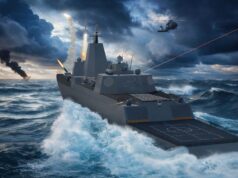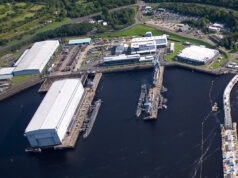This statement was made by Neil Gray, the Cabinet Secretary for Wellbeing Economy, Fair Work and Energy, in the Scottish Parliament.
It represents an official communication from a member of the Scottish Government to the Parliament, providing an update on the project involving the construction of two ferries at the Ferguson Marine shipyard.
“Today’s statement maintains, once again, this Government’s commitment to update Parliament on the progress in the building of two new ferries, the MV Glen Sannox and MV Glen Rosa—vessels 801 and 802—at the Ferguson Marine shipyard in Port Glasgow. It also gives me an opportunity to reassure Parliament that we remain committed to doing all that we can to ensure a sustainable future for the yard, and are working with it to find a way forward that will maintain shipbuilding and all the benefits that that provides to the community in and around Inverclyde.
MV Glen Sannox and MV Glen Rosa will provide lifeline connectivity for the community on Arran, ensuring access to healthcare and education services, supporting day-to-day commercial activity and providing a boost to the tourism industry, which contributes so much to the island’s economy.”
Gray acknowledged the importance of delivering the MV Glen Sannox and MV Glen Rosa ferries. He also mentioned that the Public Audit Committee had recently requested more information, assuring that responses would be provided in a timely manner where appropriate. Gray then transitioned to discussing the current status of the ferries’ delivery.
“The delivery of the ferries matters, and I welcome the scrutiny provided by this Parliament and, in particular, by the Net Zero, Energy and Transport Committee and Public Audit Committee. This scrutiny is right and proper, and I want to take this opportunity to reiterate my commitment to being as open and transparent as possible as their work progresses and concludes. In that regard, I note that the Public Audit Committee wrote to me recently requesting further information on a number of matters. I can give an assurance that that will be provided in a timely manner, wherever it is commercially appropriate to do so.
First, I will provide an update on the delivery of the two vessels. In doing so, I will address issues that have been raised in relation to the certification of the vessels and provide an update on the pathway to their handover to CalMac Ferries. In his update to the Net Zero, Energy and Transport Committee at the end of September, the chief executive officer of Ferguson Marine indicated that the delivery of the vessels had been complicated by issues related to certification by the Maritime and Coastguard Agency and that, as a result, the estimated costs to deliver both vessels had increased.”
In the next part of the statement, Gray described the role of the Maritime and Coastguard Agency as a regulatory body, responsible for certifying ships and seafarers. He noted that the MCA was involved early in the delivery of new vessels. Gray then detailed the timeline of engagement between the MCA and Ferguson Marine Engineering Ltd regarding the Glen Sannox and Glen Rosa.
Several modifications were made to the original designs in recent months to gain final MCA approval, including adding additional stairways from the upper decks of the ships. These changes, while resulting in delays and increased costs, were deemed necessary. Gray affirmed that these modifications made to the Glen Sannox would also be adopted for the Glen Rosa.
“The Maritime and Coastguard Agency is a United Kingdom-wide regulator that plays a vitally important role in providing certification to ships and seafarers. It is engaged very early in the delivery of new vessels, particularly those of a first-in-class design, such as the MV Glen Sannox. That is consistent with shipbuilding practice across the world and allows for both refinement and development of designs in response to certifier input. The MCA engagement involves both its Scotland office in Glasgow and its UK office in Southampton.
We understand that the process of engagement between the MCA and Ferguson Marine Engineering Ltd around Glen Sannox and Glen Rosa began back in 2015, with the formal approval process commencing in 2016. I understand from talking to the management at Ferguson Marine that they enjoy good relationships with the organisation as a whole and have worked well together in addressing concerns about the original designs. As reported by the chief executive of Ferguson Marine, a number of modifications have been made to the original design in the past few months in order to secure final MCA approval, including the provision of additional stairways from the upper decks of the ships. Those changes have been made successfully. Although there have been delays and increases to the chief executive’s original cost estimates as a result, it was the right thing to do to make those changes on Glen Sannox, and the modified designs will be adopted for Glen Rosa.
More recent design issues involving below-deck escape trunks were being considered by the MCA. I am pleased to note that the chief executive officer has informed me and the Net Zero, Energy and Transport Committee that that process has been completed, with approval of those design modifications. That means that the vessel will move to phase 1 of the dockside trials before her move to dry dock for the next phase of work on 18 December. Final outfitting will continue when she returns to quayside and before the sea trials that are planned for January. There is further positive news on MV Glen Rosa from the chief executive, who recently announced that the planned slipway launch and naming ceremony has been set for 12 March 2024. I look forward to being kept appraised of that planned milestone.
However, as I said earlier, those changes have consequences. It was with much regret and incredible disappointment that I noted the most recent update from the chief executive, which set out delays to his projections of the delivery dates and an increase of estimated costs around the build of both vessels. His letter puts the total cost of delivering Glen Sannox at £130 million since the point of public ownership and at £100 million for Glen Rosa. That represents an increase of £32 million for Glen Sannox and £4.8 million for Glen Rosa from the cost estimates that were provided in September 2022. Of that, he reported that uncommitted spend at the end of September was £10 million for Glen Sannox and £45 million for Glen Rosa. He made provision of up to an additional £30 million to cover contingency issues that may arise, particularly during the sea trials that need to take place before the final handover to CalMac. He projected the delivery dates as being 31 March 2024 for Glen Sannox and 31 May 2025 for Glen Rosa.
We are currently working with the yard and our external advisers to scrutinise those costs and to do all that we can to assist Ferguson Marine in minimising contingency costs and delays. I will update the Public Audit Committee on the timeline for that work as soon as possible. However, it is worth saying that, on the basis of the information that we have from the chief executive, we remain committed to the delivery of both vessels by Ferguson Marine, and the conclusions that I reached in issuing a written authority earlier this year to continue building Glen Rosa at the yard, with all the benefits that that will bring to the workforce and the community, remain valid.
We will, of course, continue to monitor and scrutinise the costs and progress associated with the delivery of Glen Sannox and Glen Rosa as part of our due diligence exercise. There is no doubt in my mind that considering a re-procurement would be highly detrimental to the island communities that we serve, because it would likely push the delivery date for Glen Rosa back to 2028. I do not believe that anyone in this Parliament would want me to do that, and I am not prepared to let our communities down in that way.
I am conscious that the Public Audit Committee has asked me to consider what, if any, information from the previous due diligence reports carried out on the forecast costs that were provided in September 2022 could now be made available. I am looking at whether the passage of time has reduced the commercial sensitivity of those reports and will respond to the committee formally by the required date, but some of the content of those reports remains the intellectual property of the commercial advisers. In reaching a decision, I must always be guided by the need to ensure that we do not harm the ability of the shipyard to compete for and secure future work.”
I will move on to the future of the yard. In considering the next steps for Ferguson Marine (Port Glasgow) Ltd after delivery of Glen Rosa, we have been very clear that our priorities are to preserve skilled jobs and secure a sustainable future for the shipyard. Earlier this year, we received a business plan and accompanying request for investment from the yard, and we are currently working with it to refine those plans and put together a proposal that will provide the kind of future that we all want to see. Any such request must meet subsidy control rules, as I have set out previously, and needs to demonstrate value for money and be open to parliamentary scrutiny. Our independent due diligence on the initial capital investment request concluded that the initial business case would not meet the commercial market operator test, which is a key legal requirement if we are to demonstrate compliance with the subsidy control regime, and therefore, we continue to examine options that would be compliant.
At the same time, the markets in which Ferguson Marine operates continue to change, and a key component of the initial case for investment was contingent on winning a specific pipeline of work that the FMPG board and management recently concluded should not be pursued at this time. We and the yard recognise that it is vital that any investment supports a business plan that reflects evolving circumstances, is genuinely deliverable and meets our legal requirements on subsidy control. We will leave no stone unturned in finding a way forward, and we will consider all options for securing a future based on a promising order book. That will be done at pace, and I expect to report back on progress as soon as possible.
I understand that this may be unsettling for the workforce, but it is important that we get this right, and I hope that I leave no one in any doubt about this Government’s commitment to retaining shipbuilding on the Clyde and providing future opportunities for the new and the future workforce in the local community. I am committed to ensuring that these vessels are delivered as soon as possible to our island communities. I am also committed to doing all that we can to support the shipyard to secure a route to a sustainable future, and to do so we have committed to provide assistance to the chief executive in the development of a revised business case for investment.
The two ferries, one of which is nearing completion at over 84 per cent cost to complete, will support the Clyde coast communities for future generations. They will increase capacity and provide a boost for the island economy, which will have benefits in ensuring a vibrant future for businesses located there. The yard remains of vital significance to the local, regional and national economy of Scotland. The progress that I have outlined today delivers on those commitments.”












Why does UKDJ do articles on this?
Why not?
Because they are part of the supply chain doing bits of T26 work?
“ In reaching a decision, I must always be guided by the need to ensure that we do not harm the ability of the shipyard to compete for and secure future work.”
This is the most important line in the whole thing.
This translate as
“ In reaching a decision, I must always be guided by the need to ensure that we do not turn Ferguson into a laughing stock and thereby remove the ability of the shipyard to compete for and secure future work.
I will therefore securely file these documents with the other SNP to-embarrassing-to-release documents including the ones about motor homes .”
This isn’t a commercial contract but a state funded handout.
It is a total joke that class rules were not understood and that escape routes were not properly understood and designed. That is pure and simple incompetence.
Hi SB,
I must admit the point about changes to escape routes also struck me as it seemed like a pretty basic thing to get right I would have thought.
I have to say the whole statement sounded a bit of a long winded way of saying it’s a been right shambles…
I do hope they manage to save Ferguson’s but they really need to sort themselves out, although to be fair it sounds as if new CEO is at least trying to do something about it. Hell of a mess to clean up though from what I have read in the past.
Cheers CR
Ferguson’s CEO made very optimistic noises early on about timely completion,
with neither extra slippage nor increased cost. More recently he has admitted his naivety, as he had failed to realise what a mess Glenn Sannox was in and how complex to complete – worse he says than a type 26 frigate. Weasel words from the minister. You can’t say you are doing everything for the yard’s future if you deny the CEO’s request for £25m to modernise equipment & improve productivity. The writing is on the wall with no new orders beyond Glenn Rosa, and the Auditor General saying that the yard has an uncertain future. Grey failed to state when the next batch of ferries would be ordered because winning that contract is the only hope for Ferguson, other than a bit of naval subcontracting.
Sounds like the Scottish Government has rejected the yards business plan for post ferry work (which seemed to involve trying to get more frigate work subcontracted from BAE and even a whole RN ship to work on) and told them to come up with a commercial plan B.
Is that because it embarrassing for a essentially SNP run yard to rely on UK government orders I wonder.
When will the public have access to view the funding details of this project, why are FMEL still asking for many £millions to complete the Glen Sannox which is supposed to be around 98%complete , also the second ship seems to be going up in price by millions every month . As the majority of the fabrication is complete on hull 802 and the machinery / equipment items in place where are these extortionate additional costs coming from , surely not labour costs ?? Also why are FMEL asking £40 million to upgrade the yard facilities , where are these crazy numbers coming from ,clearly something is amiss , it’s time experienced industry people got into FMEL to sort out the out of control budgeting .
Rework us always loads more expensive than getting it right first time.
Fergusons is a shipbuilder and unfortunately they bit of more than they could chew. But Scotland needs new Ferries and there is a long term need to build more the SNP stepped in and saved the yard.
What an appalling partnership Fergusons management and SNP incompetence a marriage made in hell.
The people suffering are the people and small businesses on the Islands and the ship yard staff both of whom face continuous uncertainty.
Ferry‘s are getting bigger due to increased volumes of traffic and freight and sorry to say this but the Fergusons site is just too small and requires yet further investment.
But if you look at the CM future requirements and non RN shipbuilding work in the Refreshed NSBS there is a need for another yard. Trinity House, Ferries, Border Force, Coast Guard they all are Government funded and we will need new ships for them.
I think it’s time to cut the loses, shut Fergusons after they complete these 2 Ferries but meanwhile set up a new yard with competent management (ask BAe, Babcock or BMT project manage it) and give it modern facilities and growth potential.
In short nationalise I’d nationalise Inchgreen before Peel Group build houses on it and that U.K. funded asset is lost for ever. Regenerate the main dock, but also build the facilities to build ferries etc and block builds for the RN and port over the workforce and apprentices.
The name Fergusons is right down there with Windscale and Delorean, just kill if and move on.
Getting UKMCGA approval for a vessel is a very big thing. It is a huge yearly task to achieve for existing vessels especially those that carry lots of people.
It covers everything including firefighting systems, alarms, lifeboats, life rafts, muster stations …How the designer produced a vessel that didn’t meet the requirements for getting passengers from point A to point B on the upper deck beggars belief.
Indeed. As an ex shipbuilder I find it quite unbelievable that they have flirted with delivering two ferries which would have been refused approval by the MCA after 8 years of liaison. These are basic design and certification issues that should have been addressed and sorted years ago. And don’t get me started on choosing a propulsion system which is effectively experimental and was chosen for virtue signalling rather than practical considerations.
Could have built 6 cheaper and quicker in othe countries. Would have also been quicker and cheaper at numerous Engilsh and Northern Irish shipyards.
Cabinet Secretary for Wellbeing Economy, Fair Work and Energy,says everything you need to know why Scotland is so fked up.
The Ferguson Ferry Fiasco will be shown worldwide in colleges as the perfect example as how Not to build ferries. Total incompetence & a national disgrace. And to think there were five tenders & Ferguson was the highest bidder, with no experience of building large ferries 🙈🙉🙊
Seriously, what’s the future for Fergusons? A bit of subcontracting for BAE maybe. Trawlers? Tugs? Forget the RN throwing them a bone methinks